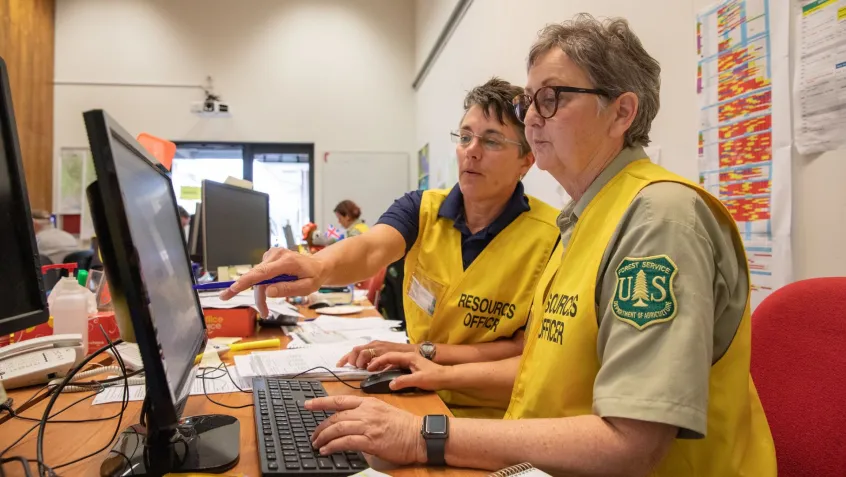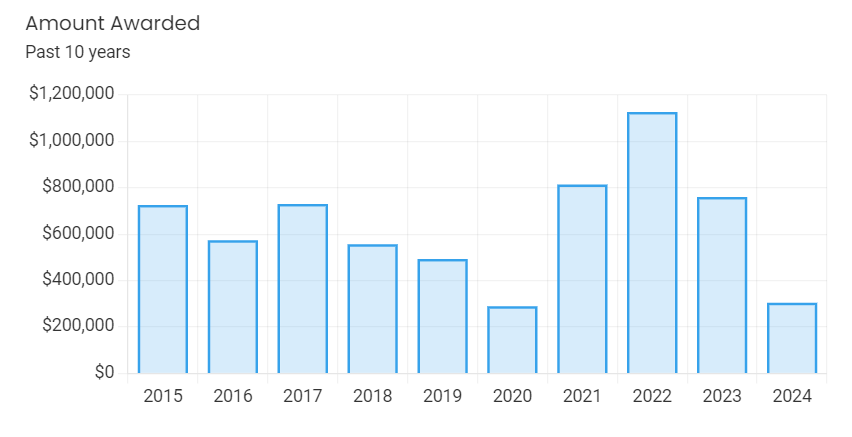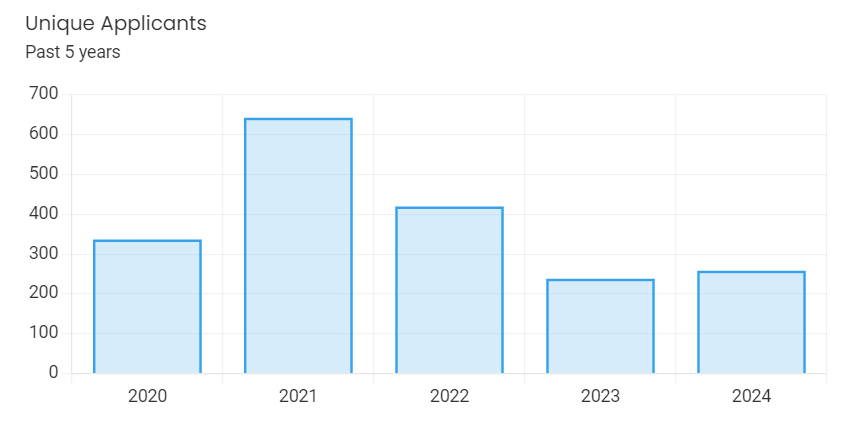
Grantmaking is an important part of NEEF’s mission to make the environment more accessible, relevant, and connected to people's daily lives. We mobilize public and private funding to support community-based projects and respond to critical and emerging needs in K-12 education, conservation, and health.
NEEF environmental grants range in size from $1,000 to $150,000, funding grassroots organizations doing important work ranging from designing and delivering STEM programming on public lands to installing conservation projects on military bases, as well as many other environmental education, health, and stewardship initiatives. In total, NEEF has awarded 1,000 grants totaling $13.7 million since 1995, with the last three years seeing the largest total amount of funding awarded annually.

Source: NEEF
"The average number of grants awarded varies from 55-200 depending on the year,” said Whitney Shuttleworth, NEEF's director of grants administration.
As interest in NEEF’s grants program continues to grow and attract additional sponsors, awards are becoming more competitive. Currently, about 23% of grant requests are approved, due in part to the popularity of the Biodiversity Conservation Grant and new Veterans and Nature Grant.

Source: NEEF
Understanding the Grant Application Process
The majority of NEEF’s grantmaking is through competitive grant award programs. Grant proposals are submitted through NEEF’s online application system. Deadlines and review eligibility criteria and guidelines vary by grant program throughout the year.
“We recognize that the person managing a grantee’s finances is rarely the one applying for the grant.
Whitney Shuttleworth, NEEF's director of grants administration.
Understanding how to write grants is a crucial part of being awarded funding. However, if your organization is new to grant writing, we don’t want you to feel intimidated or overwhelmed! We understand that some of the financial terminology or record-keeping requirements may be new to certain organizations.
“We recognize that the person managing a grantee’s finances is rarely the one applying for the grant,” Shuttleworth said.
NEEF strives to ensure our grant process is accessible to all. Below are some tips for specific sections of the application that organizations often have questions about.
Project Description
This section is the “core” of the proposal. It is your opportunity to share the goals, outcomes, and impact your proposed project will have on the target audience.
What to include:
- Outline the goals of the proposed project and explain how it is aligned with the goals and requirements of the grant.
- Identify the project’s target audience—be specific.
- Show how your project addresses existing gaps.
- Answer all questions in the Request for Application (RFA) directly and thoroughly.
What to leave out:
- Don't waste time providing supplemental information—NEEF’s objectivity standards for grant funding prevent us from reviewing anything but the answers to the questions asked in the RFA.
Project Budget
Outline the exact funding you seek from the grant to reach your project’s goals. If necessary, explain how each cost is important to the project’s success, especially if it is not immediately obvious. A detailed budget provides transparency and shows a well-thought-out plan.
What to include:
- Use NEEF’s budget template. This user-friendly Microsoft Excel template helps applicants organize their financial information to ensure accuracy and clarity in their grant proposals.
- Review the grant guidelines and requirements thoroughly to understand the funding limitations and eligible expenses.
- Be as specific as possible to show how the project’s expenses align with the RFA's requirements.
What to leave out:
- You don’t need to fill out every column. Adjust it to fit your organization’s project.
- If there are terms you don’t understand (i.e., “in-kind match”), you don’t have to incorporate them into your budget.
Organizational Budget/Financials
Share your organization’s current financial status. NEEF is required by our federal partners to ask for this information to ensure there is no risk involved if funding is provided. Please note that we evaluate applicants based on their ability to complete projects as described, not simply the size of their organizational budget.
What to include:
- The most recent complete budget you have, regardless of the fiscal year.
- Your organization’s income statement, balance sheet, or profit/loss sheet. These documents provide a snapshot of an organization’s revenue and expenses that show its financial position during a particular period.
Conflict of Interest Policy
A conflict of interest policy outlines how you identify and address any conflicts of interest within the organization. This demonstrates that your organization avoids granting awards or work contracts for private profit or benefit.
What to include:
- If your organization does not already have a standard policy, feel free to use NEEF's Conflict of Interest Policy Form template.
Additional Grant Terminology to Know
Shuttleworth highlighted two other financial terms that might cause environmental grant applicants to scratch their heads.
Fiscal Sponsorship
First, fiscal sponsorships are formal arrangements where a nonprofit organization (the fiscal sponsor) provides administrative and financial oversight to another project or organization (the sponsored entity) without its own tax-exempt status.
This arrangement allows the sponsored entity to operate under the fiscal sponsor's tax-exempt status. It can help emerging projects and small organizations focus on organizational growth and programmatic goals and initiatives while the fiscal sponsor takes responsibility for administrative responsibilities and financial reporting.
For example, NEEF is currently acting as a fiscal sponsor for WRAP, an NGO based in the UK that educates the public on eliminating food waste and promoting sustainable packaging. NEEF manages its payroll and monthly bookkeeping and creates financial statements for WRAP UK. This allows them to operate in the US as a 501(c)(3) nonprofit entity.
Organizations operating under a fiscal agent or sponsorship are eligible to apply for NEEF grants. When applying, clearly state the name of your fiscal agent and submit the requested financial documents for the fiscal agent.
Single Audit
Secondly, applicants should be aware of the requirements of a uniform guidance audit. This independent compliance audit referred to as a “Single Audit” is required by the federal government if an organization expends $750,000 or more in federal funding in a fiscal year. The $750,000 threshold includes funds received directly from a federal agency and federal funds passed through another entity first.
The good news is that such an audit won’t be necessary for many grantees. “If you're not already sure what [a uniform guidance audit] is, chances are good it doesn't apply to you,” Shuttleworth said.
Learn How to Write Environmental Grants
Ultimately, preparation is key to submitting a successful grant application. The following resources for grantees from NEEF will help you feel ready to ace your next grant application.


